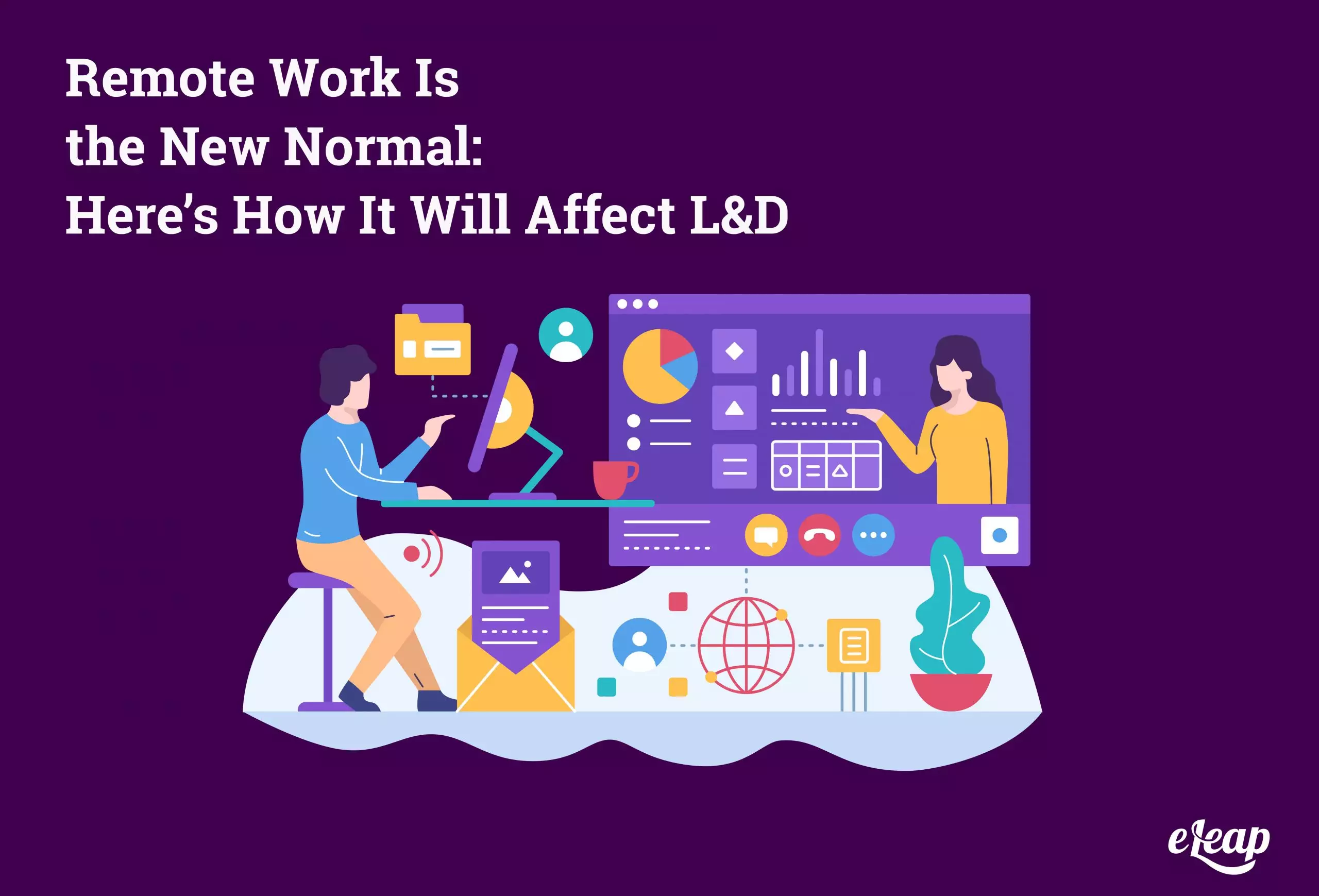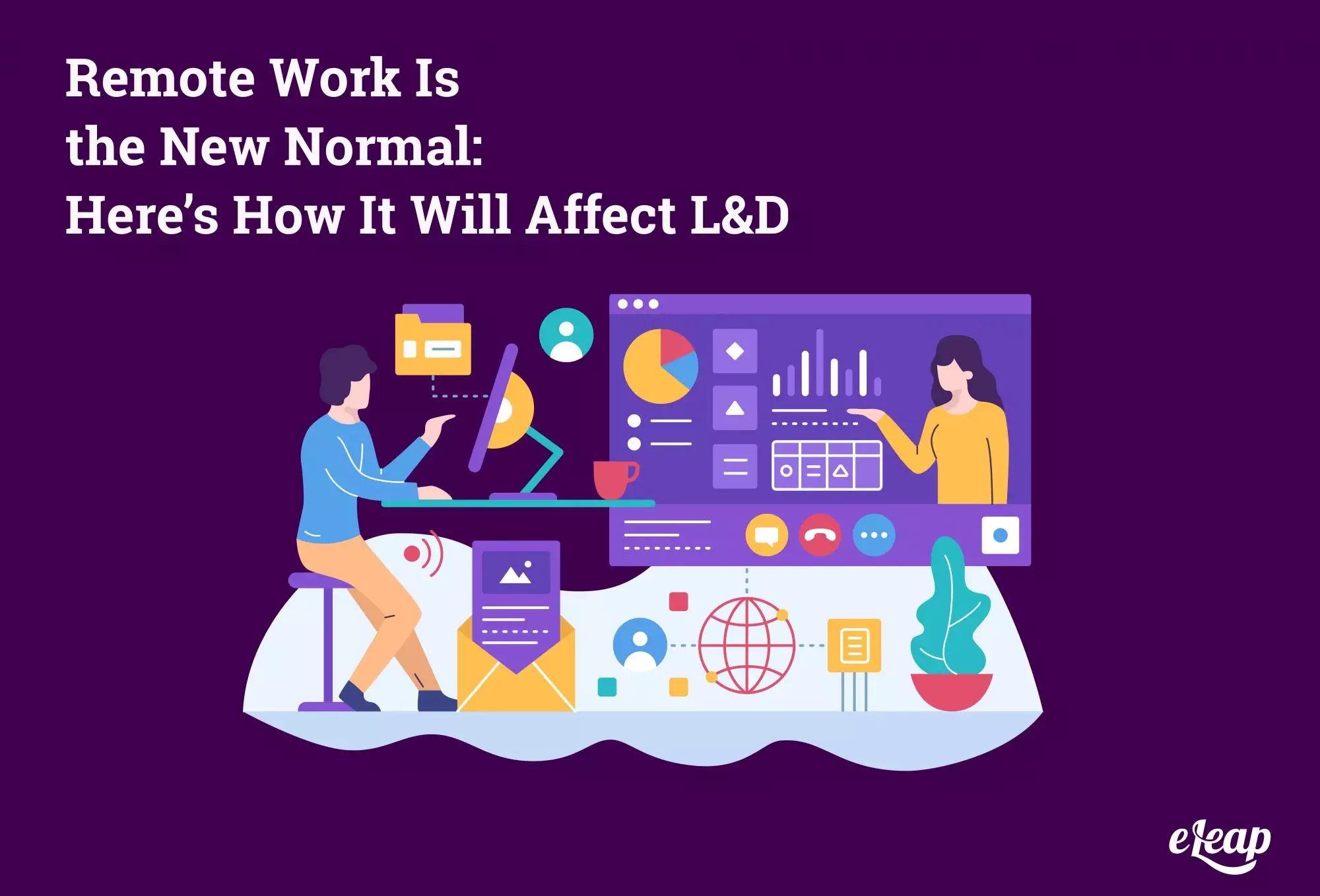Remote Work Is the New Normal: Here’s How It Will Affect L&D

Remote work is nothing new. It’s been a growing trend for well over a decade at this point. However, it’s gotten a great big push from COVID-19. Today, remote work is the norm for most office employees, but even after we deal with the pandemic, there’s a good chance that this will remain our new normal. That poses some challenges for learning and development initiatives, but it doesn’t have to be all bad news. In this post, we’ll explore a few things that you should know about remote work and how it will affect L&D.

It Will Introduce Some Challenges
L&D has never been without snags, and you can expect the remote nature of work to make some things more challenging. For instance, it can make it more challenging to identify areas where an employee needs additional training, particularly because remote work eliminates a lot of the informal conversations we take for granted in the physical workplace. For instance, employees cannot make passing remarks, can’t just “drop by” to have a word with a trainer, and because they’re not physically in the same space, it can lead to an attitude of “out of sight, out of mind”.
Thankfully, there are simple ways around these challenges. Many of them are tied directly to keeping in touch with and engaging employees in multiple ways. For instance, by having multiple communication tools, including those designed for informal and off-topic conversations, you make it more likely that employees will reach out with L&D-related questions, or that managers will pick up on the need for additional training in a remote work situation.
Focus on Psychologically Safety
Creating a psychologically safe workspace is a vital consideration. It helps employees feel free to experiment, to learn, develop, and grow without worrying that those needs will somehow backfire and result in a negative outcome for them. What does it mean to create such a safe space, though?
In terms of learning and development, it’s about raising opportunities for employees to invest in their own growth. Often, they know their needs better than management will, even in a non-remote work situation. When remote working is added to the equation, it becomes important that you empower employees to follow their own needs, requirements, and even instincts in terms of improving their knowledge and skills without fear.
Focus on Communication
We’ve touched on communication, at least in terms of the need for different channels and tools, but more needs to be said. Why? In a remote-work situation, communication is the key to success.
In a remote-work situation, you need to combine L&D communication with your performance management check-ins and conversations. Make L&D a topic of discussion during these periods. For instance, management can and should ask:
- In terms of learning and development resources, what could I make available that would help you accomplish your objectives?
- Do you feel that you would benefit from additional career-related training?
- What career trajectory would you like to see and how can we help support that through learning and development?
Find Ways to Expand L&D Initiatives with Remote Work
One important thing to consider here is that remote work actually opens up an entirely new world when it comes to learning and development. Working from home offers much more flexibility, which ties in with the capabilities of the modern learning management system (LMS). Let’s touch on those in greater detail.
Anytime, Anywhere Learning
A modern, web-based LMS supports the ability to complete training at any time, from any location. This is a perfect fit for remote work situations, as it enables your workers to complete their training from their homes when it works in their schedule. That immediately avoids some of the more common problems that can affect L&D initiatives, including a lack of available time during work hours.
Gamification for Engagement
In a remote work situation, many employees have at least a small amount more free time than usual. However, they may not choose to use that time for learning and development if they’re forced to sit through slideshow-style lessons that fail to engage them on a deeper level. Modern learning management systems offer the ability to gamify the content to make it more engaging and enjoyable. In addition to the content, the learning experience itself can be gamified by using elements like leaderboards, high scores, and the like.
Embed Communication Tools in the LMS
With remote work requiring more commitment to ongoing communication, it makes sense to bake more communication capabilities into your LMS. That makes it possible to encourage workers to achieve more, to engage with one another, and even for them to help one another within the LMS. You can do this in several ways, including the use of chat tools, message boards, forums, and the like.
Encourage Leaders in Learning
Remote work situations are prime opportunities to encourage leaders in learning by turning to subject matter experts, specialists, and other knowledgeable team members. Perhaps the most obvious option here is to create a mentorship program based on remote connectivity technology. However, there are other options, including employee-led webinars and many more.
Moving Forward in a Brave New World
Eventually, the lingering effects of COVID-19 will fade and the world will have the opportunity to go back to normal. However, given the many benefits offered by remote working, most companies will find that those outweigh the benefits of bringing everyone back under one roof. Remote work is going to be an integral part of our lives for a long time to come, and your L&D initiatives need to be tailored to meet those requirements. The right LMS can deliver critical capabilities, and when coupled with an awareness of management’s role in encouraging learners to move at their own pace through self-led content, it can support positive outcomes for everyone involved.